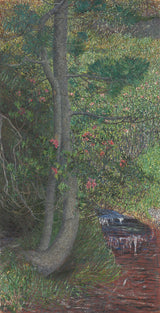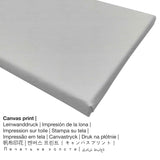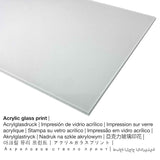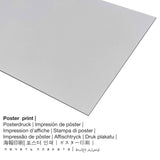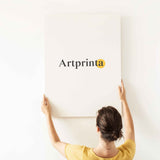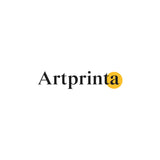Giovanni Segantini, 1897 - Pine Tree - fine art print
Taxes incluses. Frais de port calculés au paiement.
In the year 1897 the Italian artist Giovanni Segantini made the post-impressionist work of art. The original was painted with the size: Framed: 149,5 x 84,8 x 4,1 cm (58 7/8 x 33 3/8 x 1 5/8 in); Unframed: 135,2 x 72 cm (53 1/4 x 28 3/8 in) and was produced with the medium oil on fabric. Besides, the piece of art forms part of the digital collection of The Cleveland Museum of Art, which is located in Cleveland, Ohio, United States of America. The modern art public domain artpiece is provided with courtesy of The Cleveland Museum of Art. The creditline of the artwork is: Mr. and Mrs. William H. Marlatt Fund. On top of that, alignment of the digital reproduction is portrait and has an aspect ratio of 1 : 2, which means that the length is 50% shorter than the width. The painter Giovanni Segantini was a European artist from Italy, whose artistic style was mainly Post-Impressionism. The Italian artist was born in the year 1858 in Arco, Trento province, Trentino-Alto Adige, Italy and deceased at the age of 41 in the year 1899 in Pontresina, Graubunden, Switzerland.
Choose your material
In the product dropdown lists you can choose your favorite size and material. You can select your preferred material and size among the following options:
- The acrylic glass print (with real glass coating): The print on acrylic glass, which is sometimes denoted as a an art print on plexiglass, will transform your favorite original artwork into marvellous home décor. In addition, it makes a distinct alternative to canvas or dibond fine art replicas. Your artwork will be made with the help of modern UV direct print machines.
- The canvas print: The canvas print is a printed canvas mounted on a wood stretcher. A canvas creates a sculptural effect of three dimensionality. Hanging a canvas print: Canvas Prints have the advantage of being low in weight, meaning that it is quite simple to hang up your Canvas print without any wall-mounts. Hence, canvas prints are suitable for any type of wall.
- Poster on canvas material: A poster print is a printed sheet of flat cotton canvas paper with a granular surface structure. Please bear in mind, that depending on the absolute size of the canvas poster print we add a white margin between 2 - 6cm around the print motif, which facilitates the framing with your custom frame.
- Aluminium dibond print: Aluminium Dibond prints are prints on metal with an impressive depth effect - for a modern look and non-reflective surface. For the Direct Aluminium Dibond print, we print your chosen artwork on the aluminium composite white-primed surface. The UV print on aluminium is the most popular entry-level product and is a truly contemporary way to showcase art reproductions, since it puts the viewer’s attention on the image.
Legal disclaimer: We try everything in order to depict our art products as accurate as possible and to demonstrate them visually in our shop. Although, the tone of the printing material, as well as the imprint may differ somehwat from the presentation on your monitor. Depending on your screen settings and the condition of the surface, not all colors can be printed 100% realistically. Bearing in mind that all art reproductions are printed and processed manually, there might also be slight discrepancies in the size and exact position of the motif.
About the article
| Article type: | art print |
| Reproduction: | digital reproduction |
| Production process: | UV direct printing (digital print) |
| Product Origin: | Germany |
| Type of stock: | on demand production |
| Intended product use: | wall décor, art reproduction gallery |
| Orientation of the artwork: | portrait format |
| Image ratio: | 1 : 2 - (length : width) |
| Aspect ratio meaning: | the length is 50% shorter than the width |
| Item material choices: | poster print (canvas paper), metal print (aluminium dibond), canvas print, acrylic glass print (with real glass coating) |
| Canvas print (canvas on stretcher frame) options: | 20x40cm - 8x16", 30x60cm - 12x24", 40x80cm - 16x31", 50x100cm - 20x39", 60x120cm - 24x47", 80x160cm - 31x63", 90x180cm - 35x71" |
| Acrylic glass print (with real glass coating) variants: | 20x40cm - 8x16", 30x60cm - 12x24", 40x80cm - 16x31", 50x100cm - 20x39", 60x120cm - 24x47" |
| Poster print (canvas paper) sizes: | 30x60cm - 12x24", 40x80cm - 16x31", 50x100cm - 20x39", 60x120cm - 24x47" |
| Aluminium print (aluminium dibond material) size options: | 20x40cm - 8x16", 30x60cm - 12x24", 40x80cm - 16x31", 50x100cm - 20x39", 60x120cm - 24x47" |
| Picture frame: | not available |
Structured artwork details
| Name of the artwork: | "Pine Tree" |
| Classification: | painting |
| Category: | modern art |
| Artwork century: | 19th century |
| Artwork year: | 1897 |
| Age of artwork: | 120 years |
| Original medium: | oil on fabric |
| Dimensions of the original artwork: | Framed: 149,5 x 84,8 x 4,1 cm (58 7/8 x 33 3/8 x 1 5/8 in); Unframed: 135,2 x 72 cm (53 1/4 x 28 3/8 in) |
| Museum: | The Cleveland Museum of Art |
| Location of museum: | Cleveland, Ohio, United States of America |
| Available at: | The Cleveland Museum of Art |
| License type: | public domain |
| Courtesy of: | The Cleveland Museum of Art |
| Artwork creditline: | Mr. and Mrs. William H. Marlatt Fund |
Artist overview
| Artist name: | Giovanni Segantini |
| Aliases: | Segantini Giovanni, giov. segantini, Segantini, Segatini Giovanni Battista Emanuele Maria, segantini giovanni, g. segantini, Giovanni Segantini, Segantini G. |
| Gender of the artist: | male |
| Artist nationality: | Italian |
| Professions of the artist: | painter |
| Country: | Italy |
| Classification of the artist: | modern artist |
| Art styles: | Post-Impressionism |
| Age at death: | 41 years |
| Born in the year: | 1858 |
| City of birth: | Arco, Trento province, Trentino-Alto Adige, Italy |
| Died: | 1899 |
| Deceased in (place): | Pontresina, Graubunden, Switzerland |
© Copyright of | www.artprinta.com (Artprinta)
Artwork description by The Cleveland Museum of Art website (© - by The Cleveland Museum of Art - www.clevelandart.org)
Segantini painted this picture in the Swiss Alps, where he lived from 1886 to 1899. The composition is a study for an unrealized painting of Adam and Eve in paradise. Segantini’s distinctive technique is characterized by brilliant colors applied in small strokes to create an unusually vibrant surface. The artist may have intended that the bent, twisted tree, struggling for survival against alpine storms, is a metaphor for human perseverance.

